Presidents: William Howard Taft
William Howard Taft National Historic Site, Cincinnati, Ohio
Visited in 2006.
William Howard Taft was an amazing man. But you will always know him as "The Fat President Who I Heard Got Stuck in the White House Tub."
In other words, history hasn't been kind to Taft. Any job on his resume would make for a sensational career, for Taft was a very big cog in a lot of different machines. He was a great lawyer, a college professor, and Benjamin Harrison's Solicitor General (the guy who argues before the Supreme Court for the government). He was an appeals court judge, a cabinet member and the governor of the Philippines. He was elected president of the United States, and he rounded out his service by becoming the Chief Justice of the United States.
And he did it all at 300 pounds! Taft was never a (physical) lightweight -- by modern estimates, he sometimes tipped the scales at 330. His weight worked against him, making him prone to fatigue, ridicule and lots of naps. But he was a dedicated public servant who always tried to do his best. Some Taft trivia:
- His dad, Alphonso, moved to Cincinnati from New England, because he said he was tired of "all 'dem punk-ass b****** back North." OK, really, he wanted to start a law practice. But I bet he THOUGHT that other thing.
- His grandfather, much like Judge Joe Brown, was a self-taught judge.
- Every one of Alphonso Taft's sons went to law school and all but one became successful lawyers. My dad has three sons, only one of whom is going to law school. I CAN'T BE A TAFT, DAD. I WON'T.
- Alphonso and William also were both the Secretary of War. Dad, if you had done that, I might have followed in your footsteps. It just makes for a great business card. And while we're on the subject, when can we go back to calling it the War Department? "Defense" isn't fooling anyone. I'd even be open to "Department of Oh No You Didn't."
- Taft didn't want to be president. His dream was to be on the Supreme Court. His wife Nellie, the Hillary Clinton of her day, basically railroaded him into running. She was his closest political adviser, and she probably wrote a lot of his speeches. Unfortunately, due to the political climate of the early 20th century, she never got the opportunity to be the most disastrous presidential candidate in our nation's history.
- Nellie was responsible for getting the cherry blossom trees (a gift from Japan) planted around the Tidal Basin in DC. Did you know that we gave the Japanese dogwoods in return? Funny how you never hear about any Dogwood Festivals. They're probably still a little sore over the nuclear bombings and whatnot, I guess.
- He turned down three nominations to the Supreme Court during his career before becoming Chief Justice in 1921. But he never, ever, turned down a corndog.
- He was the governor the Philippines from 1901-1904. Why? Because he had to skip out of the country for a few years until the heat died down.
Why has Taft sunk so far in our estimation? The short answer is "Theodore Roosevelt." Taft and Roosevelt were close friends, and Taft helped TR invent the modern presidency as one of his closest advisers. But when Taft was elected as TR's successor (with Teddy's blessing), he quickly reverted to his legal roots. Instead of following in TR's footsteps, Taft tried to create a legal framework that would allow TR's innovations to hold up over time. TR believed that Taft was dawdling, and he turned against his old friend. By running against him in 1912, he divided the Republican vote -- which led to the worst electoral showing ever by an incumbent president. Taft was bitter, and rightly so. He eventually rehabbed his image by serving on the Supreme Court, but he is currently regarded as one of the least effective presidents.
The best monument to Taft is probably the Supreme Court building in Washington -- he was apparently the driving force behind its construction. But you can also visit his birthplace and boyhood home in Cincinnati. There's nothing much original about the site -- the house was sold at one point an carved into apartments, then it it fell into horrible disrepair before the National Park Service acquired it. The interior, therefore, does not resemble the home of Taft's pudgy childhood. Instead, the Park Service has installed a little museum on the second floor. As of 2006, it wasn't all that memorable, but it's a fine way to kill an hour if you're anywhere near downtown Cincy.
Arlington National Cemetery, Virginia
Visited in 2013.
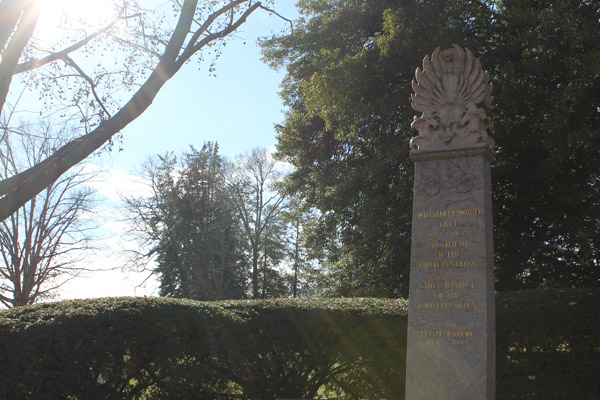
Taft was in charge of two branches of the government. What have you done, huh?
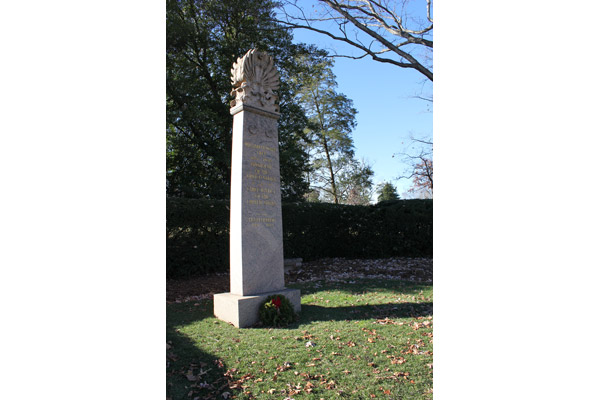
Taft's resting place in the nation's most famous cemetery.
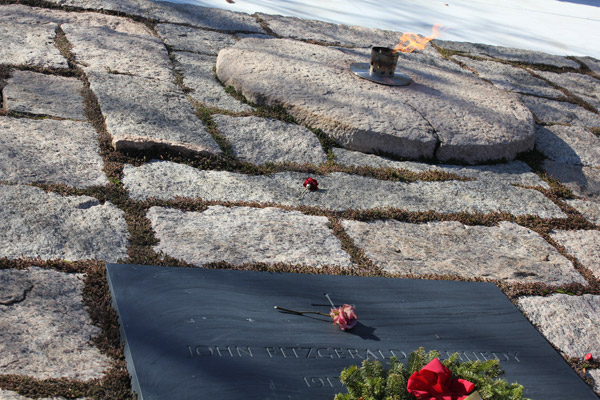
The eternal flame on JFK's final resting place.
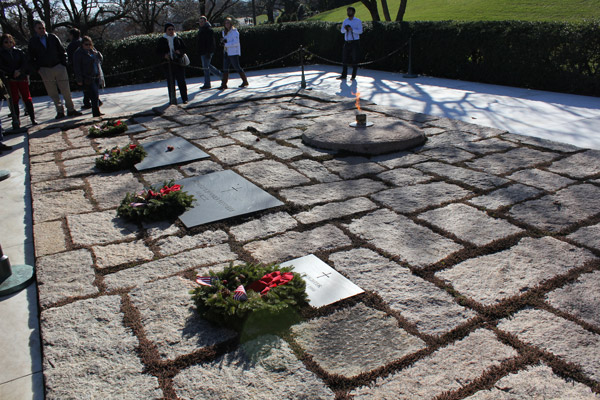
A wider shot of Kennedy's burial site.
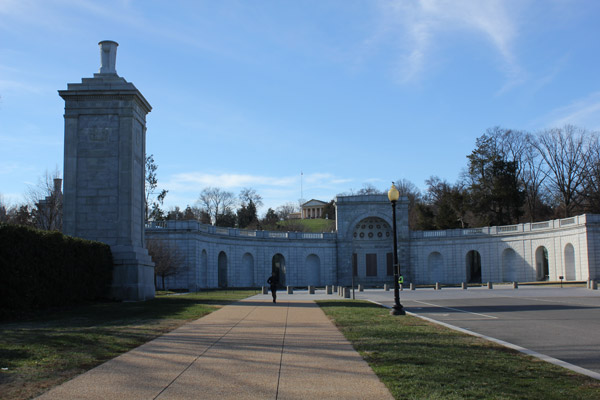
Walking up to a cemetery entrance. Arlington House is atop that hill in back.
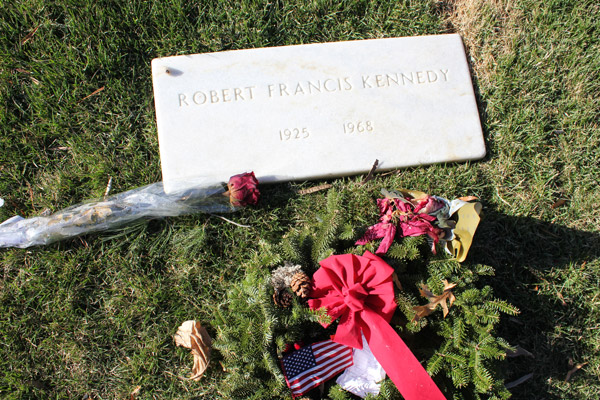
RFK's grave marker, just steps away from JFK's burial site.
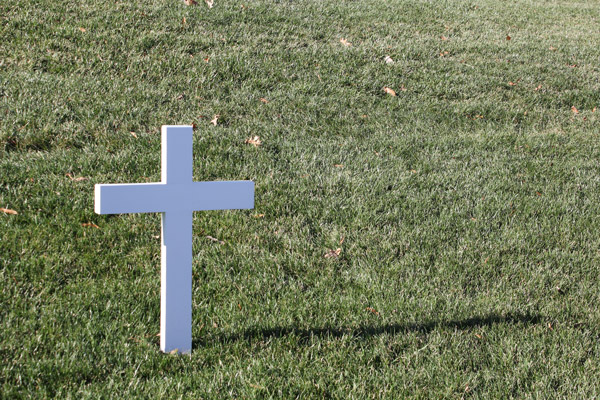
Crosses also mark RFK's grave and Ted's grave.
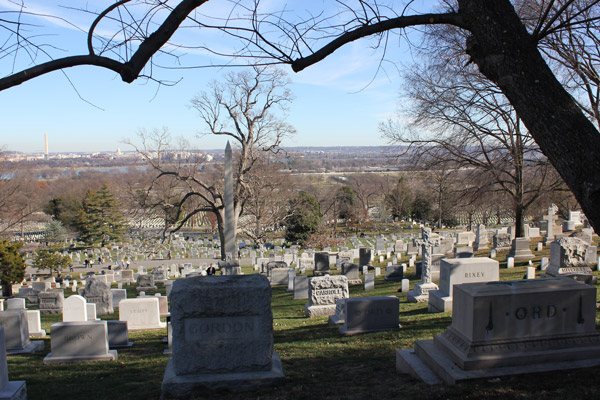
The view from JFK's burial site, looking across the Potomac toward DC.
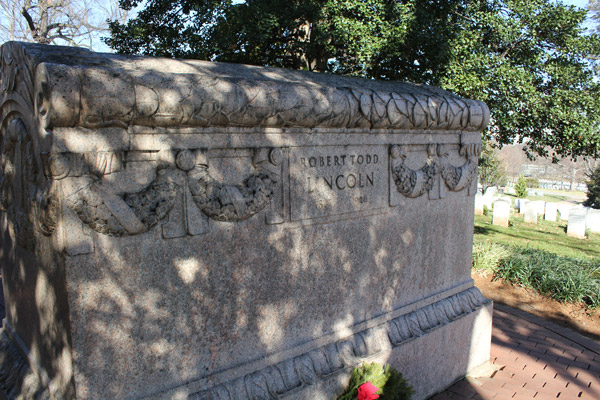
Robert Todd Lincoln, resting in the shade not far from JFK.
You get only one go-around in life, and I'm spending mine visiting people who already went around. For my 37th birthday I sounded the Horn of Nerdly Summoning and led a group of friends and family to Arlington National Cemetery. There is no better way to celebrate birth than surrounding yourself with graves, as far as the eyes can see. Verily.
There are more than 400,000 people buried in Arlington, so you have to be selective about who you visit if you don't have the whole day -- or if you're leading a group of people who could easily mutiny and throw you in an open grave when you try to lecture them on Masonic symbols for the fourth time. I had visited the cemetery before, but I have a much nicer camera now. I also have a deeper connection to death, what with my constant aging. So it was good to return.
We started by calling on William Howard Taft. He didn't meet the standards of physical fitness that we usually expect from a soldier, but then again, he wasn't one. Taft was the Secretary of War for a few years, and he also ended his public career as the Chief Justice of the United States, so he was eligible for Arlington a couple of times over. He has a nice spot fairly close to the main entrance. You might argue that he needed the bigger plot to fit his body, but I think of it as a sign of respect.
A minute away, you can find Robert Todd Lincoln. He was a member of U.S. Grant's staff during the Confederate surrender at Appomattox Courthouse, and he later served as the Secretary of War for presidents Garfield and Arthur. And oh yeah, he was Abraham Lincoln's son. Robert has the creepy distinction of being distressingly close to the first three presidential assassinations in U.S. history. He wasn't that far away when his dad was murdered; he was walking through the Washington D.C. train station with Garfield during his shooting; and he was at the Pan-American Exposition in Buffalo when McKinley got capped.
The good people at Arlington gave Lincoln's corpse some closure by thoughtfully burying the fourth assassinated president a few hundred yards away. In truth, JFK's grave is probably the highlight of the cemetery for most people. Kennedy was considered a war hero by his admirers, thanks to his efforts to save his crew following the sinking of the PT-109 during World War II. (Never mind that he was in charge of the boat, and it was cut in half during an open-water collision with a Japanese vessel. And forget that he had physical ailments so serious that he never should have accepted his assignment. Also, don't dwell on the fact that he spent part of his Navy career having an affair with Inga Arvad, who might have been a Nazi spy.)
If you're conflicted about Kennedy, just focus on his very nice grave site. Kennedy rests near the crest of Arlington's big hill, underneath the famous eternal flame. If you look toward Washington, you see a very nice stone pavilion, carved with quotations from his political career. (Never mind that they were probably written by speechwriters.) If you look up the hill, you see what appears to be the facade of a Greek temple, the visual representation of democracy and enlightened government. The illusion is only slightly spoiled by the knowledge that it's a plantation house.
That house was my inspiration for returning to the cemetery. The building has stood on that hill since the early stages of the 19th century, when it was built by George Washington Parke Custis. Custis was the step-grandson of George Washington, and he was more or less raised by the first president, who had no children of his own. Washington died in 1799, and Custis wanted the mansion to serve as a monument to his grandfather -- there wasn't a Washington Monument back then, and there wouldn't be a completed one for another 80 years. Custis had a lot of memorabilia related to Washington, and the house was his place to display it. According to our park ranger, he would sometimes pitch George's old field tents in the back yard and let people re-enact the glories of the Revolutionary War. She didn't say if any visitors cut off toes to simulate frostbite at Valley Forge.
Custis wanted the house to look like a temple, to reflect the importance of his hero. Two-story columns support a huge pediment, and the whole thing is covered with a faux-marble finish. If you were traveling through the new city of Washington, it would have been one of the most notable landmarks, as its position on a hill above the Potomac would have put it in visual range of Georgetown and the new downtown. Nothing else would have been built at that height, and the house is roughly on the axis formed by drawing perpendicular lines connecting the White House and the Capitol. Pierre L'Enfant, the designer of the city plan and George's chief military engineer, envisioned those lines as key spots for monumental structures. (L'Enfant is today buried on the front yard of the mansion, at a spot overlooking his city. His is the only corpse in the graveyard with a better view than Kennedy's.)
With my freakish love of presidents, that's all I needed to justify a visit. The story of Robert E. Lee is just a bonus. As a young Army officer, Lee married Custis' daughter, Mary. That tied him to the Washington family, and when Custis died in 1857 it made Lee the master of the mansion. He was still in charge when the Civil War started.
Lee turned down the opportunity to lead the Union forces, staying loyal to his home state of Virginia. With his keen understanding of tactics, he understood that it might be difficult to keep his primary residence just across the river from the capital of the nation that was now actively trying to kill him. He fled the plantation, and the Union Army soon occupied the estate. Within a few years, the land had been converted to Arlington National Cemetery. A few years later, one of Lee's descendants sued the government for ownership and won, but there were lots of bodies already in the ground; he sold the land back to the feds for a very nice price. Today, the government officially operates the plantation as "Arlington House," the nation's memorial to Lee -- who was, if you want to split hairs, a traitor. Who says there are no second chances?
The last time I was at Arlington House, it was under heavy renovation. All the furniture was gone and all you could do was walk through a bunch of empty rooms. As of 2013, they had renovated upwards of four rooms; there was some nice period furniture and paintings in the downstairs parlor. As it turns out, we went on maybe the busiest day of the year. The ranger said they usually get about 100 visitors, but on my birthday -- a glorious Saturday in the week between Christmas and New Year's Day -- they were expecting 3,000. People probably knew I would be there.
